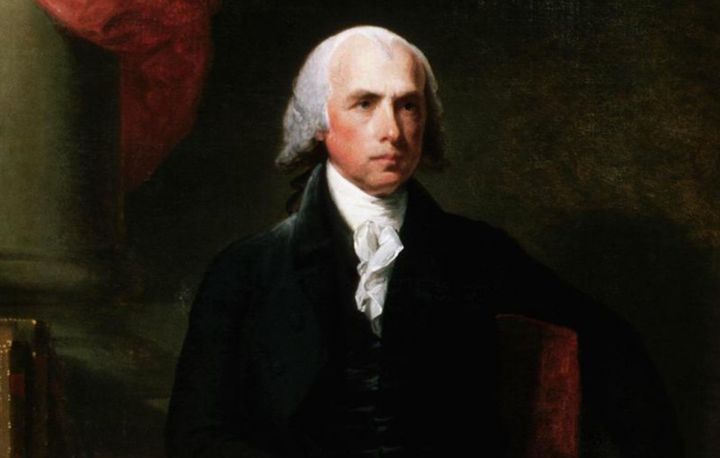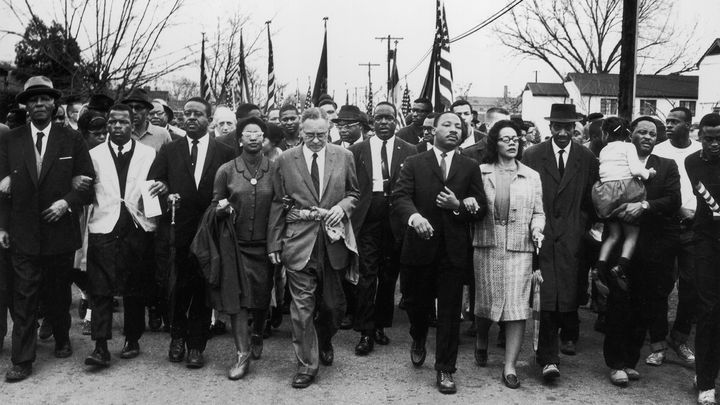
There are moments in history when moral clarity becomes necessary to heal and move forward as a nation. This is one of those defining moments. Last weekend, Charlottesville’s quaint streets were illuminated not by the ideals of Thomas Jefferson --who called the town home-- but by the torches of a white nationalist movement this country thought it had moved on from. What began as a protest to preserve a statue of Confederate General Robert E. Lee turned into a horrific spectacle of racial and political violence. Americans turned on Americans, culminating in a domestic terrorist attack that took the life of 32 year old Heather Heyer.
It was in this moment that the nation’s eyes -- swollen with anger and sadness -- turned to the highest office of the land for moral clarity. But it was not to be found. Mr. Trump stood behind the great seal of the United States presidency and openly fanned the flames of division by drawing moral equivalence between those who promoted racist and bigoted views and those who stood ground to counter it. Widespread condemnation ensued across the political spectrum for what should have been a clear repudiation of antisocial and anti-American values.
The president’s own aids were stunned by his rogue remarks, while his Chief of Staff John Kelly stood speechless off stage, arms crossed, staring blankly at the floor. There was one notable exception of support: David Duke, the former Grand Wizard of the KKK publically thanked the president for his “courage and honesty” for his condemnation of “leftist terrorists.” Subsequently, White supremacists and neo-Nazi platforms have openly celebrated the White House's whitewash of last weekend’s tragic events.
Let us be clear about the facts: last Friday night’s rally was a coalition of “alt-right” groups that espoused an openly white nationalist and racially charged ideology. They wielded Confederate flags, Nazi iconography, and fiery torches, the historic symbolism of which was lost upon no one. They marched down the streets of Charlottesville chanting divisive slogans such as the anti-diversity, “You will not replace us,” which quickly turned to the anti-semitic “Jews will not replace us,” followed by the infamous Nazi rally cry, “Blood and Soil.” The later, being an anglicization of the German “Blut und Boden” -- a central tenant of Nazi philosophy that justified, through blood right, the re-appropriation, ethnic cleansing, and expansion of land and property for the white Aryan race. It was this toxic cocktail that ended in an act of terror with a known Nazi sympathizer behind the wheels of sedan that crashed into a crowd of counter protesters, killing one and injuring 19.
The message of those who had come from around the country to rally in Charlottesville was explicit in words and action: America belongs to the white race, and to the white race alone. They wrongly believe their exclusivist vision of society is supported by history: that America was founded on Christian principles, inherited from its white European forebears, to the exclusion of all others. A more accurate portrayal of the US’ founding, however, reveals a rejection of such narrow identity politics in favor of a much grander mission of inclusivity.
A Revolutionary Identity
The US was never founded as a home for one group of people. To the contrary, it began as a radical experiment in plurality. The founding fathers were born into an America torn by divisive religious and cultural politics of the 17th and 18th centuries. The colonies each attempted to enforce denominational homogeneity through the discrimination, marginalization, and persecution of others. This unstable, and often violent, experience of exclusivist attitudes made a lasting impression on the nation’s founders. Upon independence, they quickly moved to harmonize the diverse and fragile federation of states into the fold of a new, collective national identity.
Unique for its time, the new nation’s identity would form not around the construct of race, ethnicity, or religion; but around a set of shared values and ideals. Rather than treat diversity as a source of weakness, this revolutionary American experiment treated diversity as a source of strength where various social and cultural orientations came together to form a new democratic order. To drive this point home, the great seal of the United States was emblazoned with the words that form the central theme of American identity: “E Pluribus Unum” -- Out of many, one.

James Madison the Pluralist, and fourth President of the United States
It is this inspired vision of America as a land of values and ideals -- as opposed to race or ethnicity -- that must be safeguarded as the country heals and moves forward from last week’s events. It’s a vision that has recently been put to test, and one that will face renewed challenge in light of demographic shifts that continue to redefine the face of America as we know it.
According to the Census Bureau, by 2044 the collective minority populations of the US will represent the majority. This has been a gradual shift that has been underway for some time: in 1965 the white American population stood at 84%; today it’s around 64%; and by 2044, it will dip under 50%. Contrary to what some may believe, these changes are not driven by increases in immigration. It has more to do with the fact that white Americans -- in a trend consistent with declining populations among advanced industrial nations -- just aren’t having as many babies as they used to.
There are some interesting social and economic implications taking place as a result of this demographic shift. As white Americans age-out of the labor force in increasing numbers, it is America’s minority and immigrant populations -- with higher fertility rates -- that keep the nation’s engine of growth moving forward (and the aging generation’s pensions and social security paid!). They are, in the words of social commentator Fareed Zakaria, “America’s secret weapon.” Without immigration to offset birth decline, he stresses that American GDP would have been comparable to the more depressed growth rates of European countries (with more restrictive immigration policies) over the last quarter century.
Compelling figures are cited to underscore these realities: 50% of Ph.D’s in every subject are earned by foreign students in the US; 50% of science researchers are comprised of foreign students and immigrants; and over 50% of start-ups founded in Silicon Valley at the turn of the century was by immigrants or first generation Americans. Zakaria goes on to conclude that, “America’s edge in innovation is overwhelmingly the product of immigration...America has been able to tap this energy, manage diversity, assimilate newcomers, and move ahead economically.”

Google CEO, Sundar Pichai
Should there be further doubt, following a recent presidential travel ban, the Scientific American published a reminder that brought together decades of research performed by scientists, sociologists, economists, demographers that affirmed, “Socially diverse groups (that is, those with a diversity of race, ethnicity, gender and sexual orientation) are more innovative than homogeneous groups.”
The tired old argument that minorities and immigrants take American jobs and drain national resources is not only fundamentally wrong; it’s an argument that’s also bad for the economy. Two and a half centuries on, the founders are still getting it right: America’s diversity remains its source of national strength.
How America’s Legacy Will Unfold
Despite the beauty and universality of the US Constitution's founding principles, it has taken many years and many struggles for minority groups to access their naturally endowed rights. The road to Charlottesville is paved with memories that are, regrettably, all too familiar. The hallowed grounds of oppression have stretched from the bloody streets of Selma to crowded internment camps, and into the unfamiliar and desolate lands of reservations. It has endured across thorny cotton plantations, through an endless network of railroads and mines; and into damp, crowded corners of sweatshops. Its imposing signs commanded who to love, where to sit, who could speak, and who could not.
Along the way, each group held up a mirror to broader society to reflect on its shortcomings. Progress was never easy, but each time the mirror went up, America responded (begrudgingly, at times) to the call of the “better angels” of its nature. The nation’s journey to freedom has been long and generational in this way; a sacred effort measured not in strides, but in inches.

Rev. Martin Luther King, Jr. leads the march from Selma to Montgomery, 1965
That events like last week’s in Charlottesville can take place in 2017 is a reality check for America’s conscience. White nationalism has long been a part of US history, peaking in the 1920’s with over 5 million due-paying members of the Ku Klux Klan. The national spotlight has once again illuminated the extent to which these groups operate in the open today. It turns out there are over 800 of of them (you can view their locations on a map here); and their numbers reached a record high last year following an election campaign that energized, with with purposeful precision, the once shadowy fringe.
Now that these groups have been exposed to the mainstream, there is an opportunity to heal the racial scars that have re-opened, and these ideologies in a meaningful way. Besieged and beset with so many protest resignations this week, there is unlikely to be effective leadership taken on this front by the White House. Progress, therefore will fall upon civil society and local government efforts to enact measures to ensure social cohesion for the time to come.
These changes are already apparent across American towns and cities: today there are far fewer Confederate statues than existed just one week ago. Civic leaders and elected officials are no longer willing to accommodate narratives that glorify division, and have started to remove Confederate statues from state property. The irony of all this is that the Confederate general himself, Robert E. Lee (whose likeness the white nationalists sought to preserve in Charlottesville) stood against the erection of such monuments in the first place. When statues were proposed to mark the fields of Gettysburg, he declined, saying, “I think it wiser...not to keep open the sores of war but to follow the examples of those nations who endeavored to obliterate the marks of civil strife, to commit to oblivion the feelings engendered.” His central message then, is one that remains relevant today: Move on, and focus on efforts to unify and heal the nation.
At the core of it, however, this latest episode of race relations is not about statues. It’s about competing visions of what America stands for. While it may be tempting to ridicule, shun, or punish white nationalist movements back into the shadows, given the growing numbers of Americans that buy into this narrative (and that a majority within the president’s own party approve of his characterization of last week’s events) the ideological drivers will need to be addressed more directly as a national issue. History has shown that when such anti-social ideologies are left unaddressed, or worse, pushed into a corner, they have a tendency to manifest in increasingly virulent forms.
White nationalist groups, similar to the ideological expression of exclusivist movements around the world, begin with an identification with economic and cultural displacement. Its adherents feel that state institutions have failed them, that their capacity to enact change is limited within the existing social and political framework. As a result of this perceived betrayal, they turn inward and cling to symbols of power they identify with, and that they can channel empowerment from: religion, ethnic solidarity, and examples of past glory.
It is this dangerous formula that gives rise to nationalist or radical movements; be they the likes of Nazism, Islamist radicalism, or white nationalism. The connection that members of the “alt-right” movement feel to Confederate monuments can be explained in this context: it was the last time a group representative of their color, creed, and religious and political sentiments rose up to confront the Goliath of economic and political oppression. The removal of these symbols then, has been perceived as a direct attack upon their identity.
This is not to justify racist attitudes or bigotry, nor is it a defense of Confederate statues. There is no place for divisive ideologies or their glorification in civil society. An understanding of these motivations, however, can help civic leaders and local governments constructively address and channel these groups back into the mainstream of social and political discourse. Failure to do so — as we have learned from previous extremist movements — will only accelerate their radicalization in much uglier forms.
At this juncture, America is facing a test of its moral fiber. The nation’s fundamental strengths have always been its openness, inclusiveness, and resilience in the face of social challenges. As long as these values remain the dominant narrative of the nation, America’s future and prosperity is secured. The nation has passed this moral test time and again throughout its history by re-committing to these values. Today, that same opportunity is laid before us once again: first, to reconcile the realities of what it means to be an American in the 21st century, and then move forward as a nation, together. In this regard, America’s future may not be white; but it has every opportunity to remain as bright as ever. How the legacy of America unfolds is entirely up to us.
